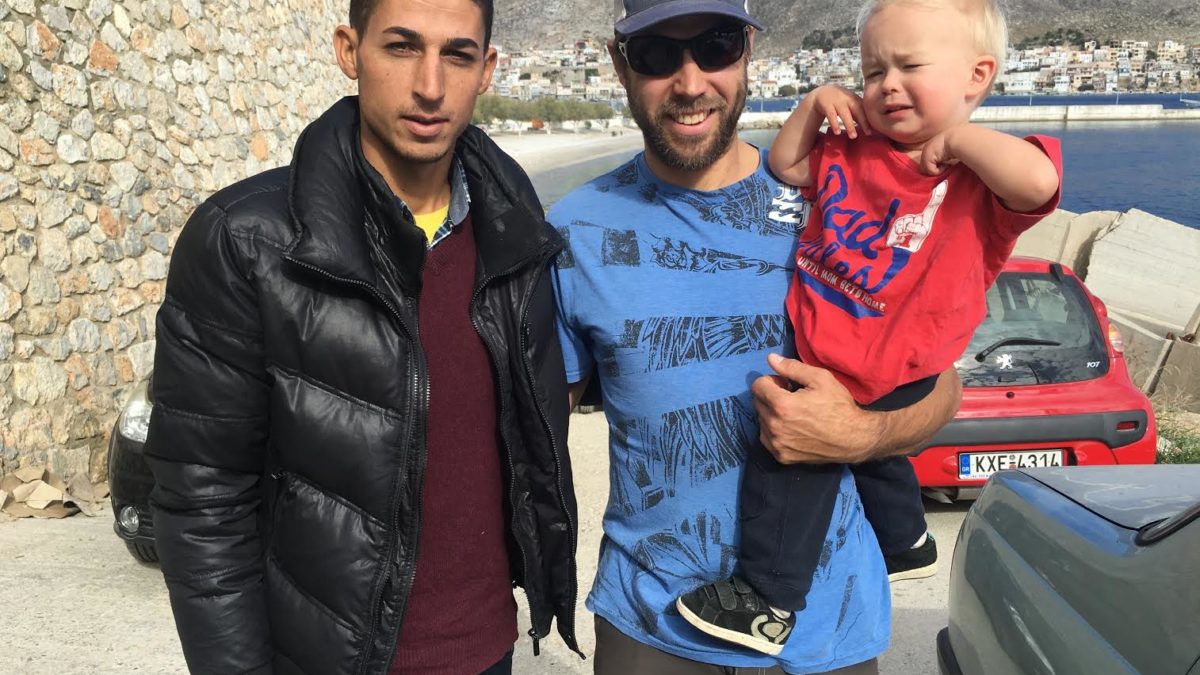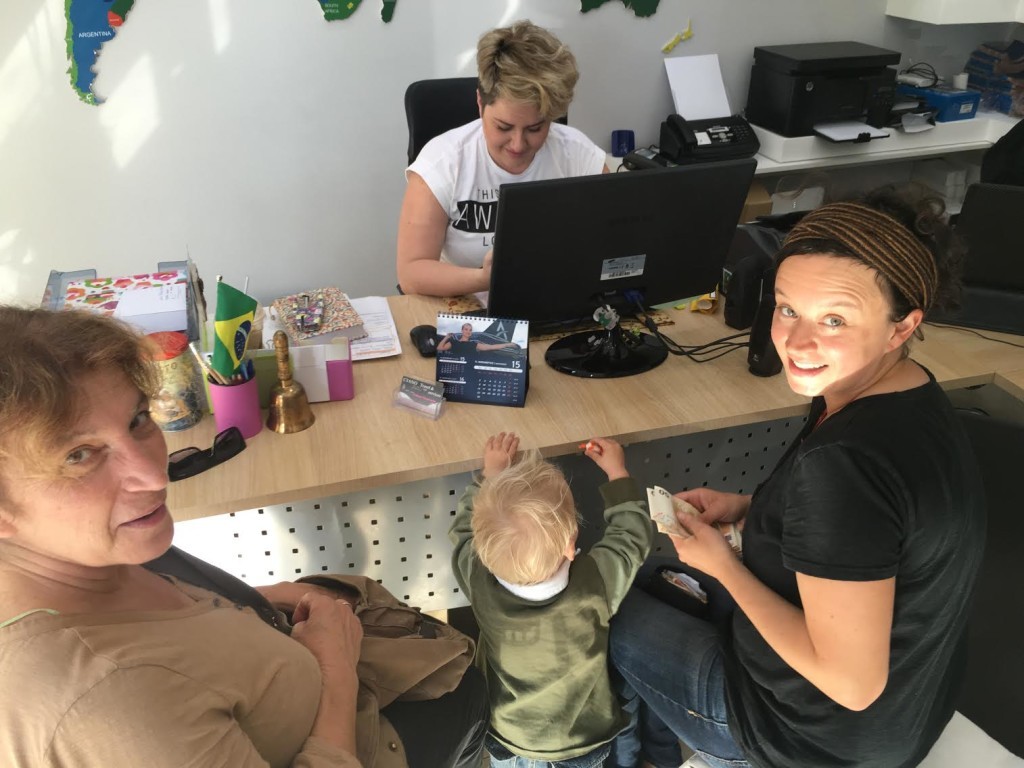Part II: Alex Geary and Family Climb Kalymnos, Help Refugees

Alex Geary writes about his time in Kalymnos, where, with his wife Amanda and son Dax, he has been assisting with Syrian refugee support.

“Can I please pay my bill?” I asked the waitress politely. “No, you will sit down and I will bring dessert.” Ok, well that wasn’t exactly the response I was anticipating. We hadn’t ordered dessert, but after three weeks already on the island we had learned that it was pretty normal to get free dessert and even free wine at the particular restaurant we were at, which may have had something to do with why we chose to eat there.
We had chosen a family vacation to Kalymnos for many reasons, but mostly because there is great climbing, it’s on the ocean and the guidebook describes how suitable each area is for children. Amanda and I have a two year old son, so this last point was probably the most important. We had invited all our climbing friends that also had young children, hoping that this would maximize the amount of supervision available. A good friend from Whistler had planned on being there at the beginning of our trip with his family, but unfortunately he had to pull out due to knee surgery.
That left us climbing alone for the first week, but we made rapid progress. Day one: no climbing (or sleeping), just playing at the beach. Day two: one pitch of climbing. Day three: two pitches of climbing. Day 4: four pitches of climbing. We were stoked, we’d started to settle into a routine and we’d doubled the amount of pitches we climbed every day.
We’d also been deciphering what “OK” for kids meant in the guidebook. For us, this meant if we tried to climb without someone else to supervise our toddler Dax, he was certain to fall off a large boulder or cliff onto his head. Symblegades turned out to be by far the most kid friendly crag we found, with a huge flat area the size of several tennis courts, different aspects to climb on and grades from 5b to 7a, all excellent quality.

The second week of our trip my parents came to visit, which was great not only because they live in Australia and I don’t see them very often, but also because their main reason for coming was to babysit so that Amanda and I could go climbing. Or maybe it was to spend time with me and their grandson? Anyway, week three our friends Larry and Inka showed up with their one year old son, which was awesome for all of us. Now we could be at the crag as a family, and feel like our belayer was actually going to catch us if we fell. The first week there was at least one occasion when I was trying to redpoint a route, and Amanda had to tie me off and chase after Dax who had run away to play with the goats.
The first area we visited with Larry and Inka is called The Beach, not surprisingly because the crag is on a beach. We realized when we arrived that it was the location where 19 Syrian refugees had died the previous day while trying to reach Greece from Turkey, nine of them children. There were life jackets and rubber tubes strewn across the beach, along with lots of debris including an abandoned homemade raft. We felt saddened and tried to think if there was anything we could do to help, but at the time we couldn’t.
The following day, Amanda started asking around to see if the refugees needed anything. From our initial probing, it seemed that they had lots of food, but were most in need of basic hygiene items and baby clothing. Amanda made a post on Facebook asking for donations, and within 24 hours she’d already raised $500. Our next rest day, we took all our spare baby clothing from Dax and also from Leo (Larry and Inka’s son), spent 300 Euros at the grocery store on hygiene products and delivered it all to the Refugee Support Centre in Pothia, Kalymnos.
This gave us a chance to see first hand how the refugees were doing, and also allowed us to speak to the staff who were handing out supplies to the refugees, to ask them what they needed next. Their response was “backpacks.” The people-smugglers often confiscated the refugees’ belongings in Turkey, to try and maximize the number of people (and hence income) they could squeeze onto the overcrowded boats. This left the refugees with nothing more than the clothes on their backs and if they had to swim for shore they often didn’t even have shoes.

Our story appearing on the Gripped website helped legitimize Amanda’s “Go Fund Me” account and pretty soon she raised over $5,500. For the past two weeks, we spent our rest days spending the money Amanda had raised on items the refugees needed most, including backpacks, rain ponchos, socks, shoes, underpants and ferry tickets. Amanda has kept the Go Fund Me account open, so if anyone else donates money she can call one of the travel agencies we visited in Pothia and add the money to the refugee account. Now, we just have to hope the refugees can find a country that will accept them.
– For Part I of this story, visit here. If you’re looking for a way to help, reach out to Amanda and Alex via Amanda’s website here, on ‘Help for Refugees in Molyvos here or on Red Cross here. To donate to Amanda’s Go Fun Me account, visit here.


